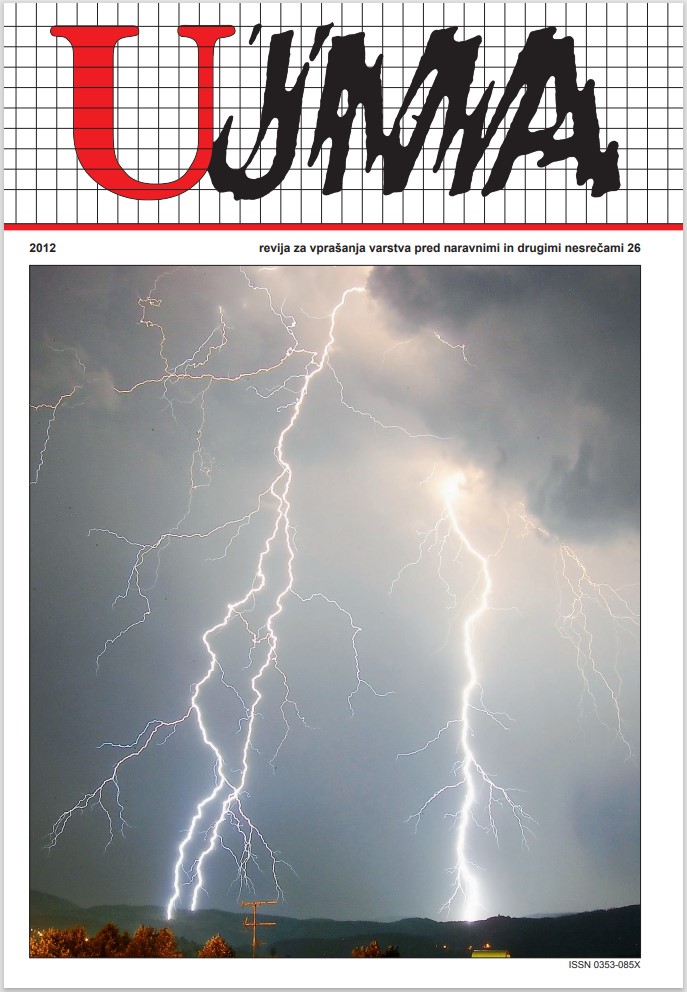BASIC HYGIENE AND TECHNICAL MEASURES IN THE EVENT OF NATURAL AND OTHER DISASTERS
Abstract
Sudden phenomena, such as mass disasters and catastrophes, endanger individuals and communities, and immediately place people in extremely difficult circumstances. People have to face both human casualties and material loss. This represents a great physical and psychological burden which is further intensified by the deterioration of hygienic conditions. First measures taken in the event of natural disasters are aimed at saving human lives; these are immediately followed by activities for the provision of drinking water and food, accommodation, personal hygiene conditions, waste management, and measures to control the risk of occurrence and spread of infectious diseases. All these activities must be carefully planned and professionally carried out in due time, as this is the only way for them to contribute to the management of various risks. The article presents those hygiene and technical measures, by priority order, both substantively and schematically, that significantly contribute to the control of a situation caused by natural and other disasters.
References
Bauer, M., 1994. Temeljni sanitarni problemi ob naravnih in drugih nesrečah. V: Ujma 8, 1994, 220–224.
Bauer, M., 2004. Higiensko-tehnične zahteve za ravnanje z odpadki. V: Obvladovanje higienskih procesov v vrtcih in domovih za starejše. Ljubljana, Zbornik seminarja 2004, ZSTI, Inštitut za sanitarno inženirstvo, 24–40.
Bauer, M., Jevšnik, M., 2008. Higiensko-tehnični ukrepi ob naravnih in drugih nesrečah. V: Prva pomoč: priročnik za bolničarje. Ljubljana: Rdeči križ Slovenije, 321–334.
IVZ Republike Slovenije, 2010. Pogosta vprašanja o pitni vodi. Kako zagotoviti varno pitno vodo. Dostopno na http://www.ivz.si/Mp.aspx?ni=115&pi=5&_5_id=410&_5_PageIndex=0&_5_groupId=245&_5_newsCategory=&_5_action=ShowNews Full&pl=115-5.0.
Jevšnik, M., Hlebec, V., Raspor, P., 2008. Consumer interpretation of the term food safety. Acta aliment. (Bp.), 37(4): 437–448.
Kastelic, I., Bonač I., 1983. Higiena I. Ljubljana: Univerza v Ljubljani, VŠZD, 111–118.
Likar, K., 1994. Sanitarno nadzorstvo v izjemnih razmerah. V: Ujma 8, 1994, 224–227.
Likar, K., Bauer, M., 2006. Izbrana poglavja iz higiene. Ljubljana: Univerza v Ljubljani, Visoka šola za zdravstvo, 13–18, 72–114, 174–187.
Macarol - Hiti, M., 2000. Preventivno zdravstveno varstvo ob množičnih nesrečah. Knjiga izvlečkov. 1. konferenca katastrofe in vojne medicine. Portorož, 6.–9. september 2000. Ministrstvo RS za zdravstvo, 4.
Opačič, S., 1989. Higiena v hudih naravnih in drugih nesrečah. Ljubljana: Medicinska fakulteta Univerze Edvarda Kardelja v Ljubljani, 15–39, 48–62.
Slabe, D., 2006. Zdravstveno varstvo v izrednih razmerah. V: Prva pomoč. Priročnik s praktičnimi primeri, 627–635.
URSZR, 2012. Kako zagotoviti varno pitno vodo. Dostopno na http://www.sos112.si/slo/page.php?src=np28.htm.
WHO, 2012. Food safety is essential for disease prevention In the aftermath of natural disasters. Dostopno na http://www.who.int/foodsafety/food borne_disease/emergency/en/index6.html.
ZZV Ljubljana, 2010. Poplave – varnost živil v izrednih razmerah. E-novičke, Moje zdravje, 1–8. Dostopno na http://www.zzv-lj.si/izobrazevanje-in-strokovna-srecanja/e-novickevarnost-zivil-v-izrednih-razmerah-poplave.pdf.
Downloads
Published
Issue
Section
License

This work is licensed under a Creative Commons Attribution-NonCommercial-NoDerivatives 4.0 International License.
The articles are made available to the public under Creative Commons Attribution-NonCommercial-NoDerivatives 4.0 International (CC BY-NC-ND 4.0).


